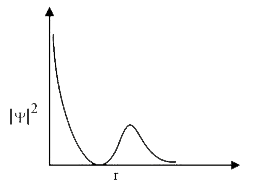The working principle of Steam engine is
Digital logic
Super conductivity
Laws of thermodynamics
Nuclear fission
The correct Answer is:C
Step-by-Step Solution:
1. Understanding the Steam Engine: A steam engine is a type of heat engine that converts thermal energy (heat) into mechanical energy (work).
2. Heat to Mechanical Work Conversion: The steam engine operates by using heat energy to produce steam, which then expands and pushes a piston. This expansion of steam is what creates the mechanical work.
3. First Law of Thermodynamics: The working principle of the steam engine can be explained using the first law of thermodynamics, which states that the change in internal energy (ΔU) of a system is equal to the heat added to the system (Q) minus the work done by the system (W). Mathematically, it is expressed as:
ΔU=Q−W
In the case of a steam engine, the heat supplied is converted into work done by the engine.
4. Piston Movement: Inside the steam engine, when heat is supplied to the water, it converts into steam. The high-pressure steam pushes the piston, causing it to move back and forth. This motion is harnessed to perform mechanical work, such as turning wheels or driving machinery.
5. Conclusion: Therefore, the working principle of a steam engine is based on the conversion of heat energy into mechanical work through the expansion of steam, following the laws of thermodynamics.
ΔU=Q−W
In the case of a steam engine, the heat supplied is converted into work done by the engine.
Topper's Solved these Questions
- PHYSICAL WORLDBook:AAKASH SERIESChapter:PHYSICAL WORLDExercise:EXERCISE
Explore 10 Videos
- OPTICAL INSTRUMENTS Book:AAKASH SERIESChapter:OPTICAL INSTRUMENTS Exercise:PRACTICE SHEET (EXERCISE -I) (OPTICAL INSTRUMENTS) (LEVEL-I (MAIN)) (SUBJECTIVE OBJECTIVE TYPE QUESTIONS)
Explore 21 Videos
- PRACTICAL PHYSICSBook:AAKASH SERIESChapter:PRACTICAL PHYSICSExercise:LECTURE SHEET LEVEL-II (ADVANCED) Linked Comprehension Type Questions
Explore 4 Videos
Similar Questions
The graph for an orbital between |φ|2 and r(radial distance) is shown below. The sum of principle quantum number, azimuthal, quantum number and magnetic quantum number of this orbital is ____________.

View SolutionA pinhole camera works on the principle of the rectilinear propagation of light.
View SolutionFind the amount of heat energy supplied to a Carnot engine from the source in each cycle if the engine is working between 300 K and 600 K and if has a work output of 800 J per cycle.
View SolutionName any one instrument which works on the principle of Tangent law in magnetism.
View SolutionLightning conductor works on the principle of charging by ................ (induction/conduction)
View SolutionA Carnot's engine is made to work between 200∘C and 0∘C first and then between 0∘C and −200∘C. The ratio of efficiencies of the engine in the two cases is
View SolutionA carnot engine takes in 3000 kcal of heat from a reservoir at 627∘C and gives a part of it to a sink at 27∘C. The work done by the engine is
View SolutionA Carnot engine takes 3×106cal. of heat from a reservoir at 627∘C, and gives it to a sink at 27∘C. The work done by the engine is
View SolutionA carnot engine takes 6000 cal of heat from a reservoir at 627∘C and gives it to a sink at 27∘C. The work done by the engine is
View SolutionA carnot engine operates with source at 127∘C and sink at 27∘C. If the source supplies 40kJ of heat energy. The work done by the engine is
View Solution
